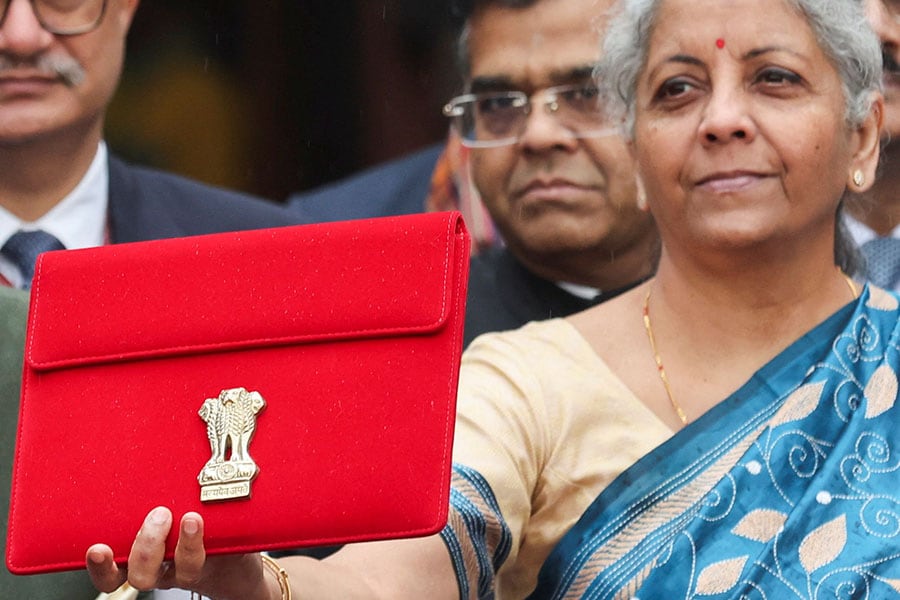
A budget of fiscal prudence for Viksit Bharat
In her sixth budget presentation, Finance Minister Nirmala Sitharaman hits the right chord with top focus on fiscal prudence, green energy and investment-led growth for all sections of the society
 The devil is in the fine print, but prima facie, Finance Minister Nirmala Sitharaman, in her sixth year of budget announcements, has steered clear of any major deviations from the path of fiscal consolidation. Image: Anushree Fadnavis/ Reuters
The devil is in the fine print, but prima facie, Finance Minister Nirmala Sitharaman, in her sixth year of budget announcements, has steered clear of any major deviations from the path of fiscal consolidation. Image: Anushree Fadnavis/ Reuters
It is hard for a government to not bite the bait of populism ahead of general elections. The devil is in the fine print, but prima facie, Finance Minister Nirmala Sitharaman, in her sixth year of budget announcements, has steered clear of any major deviations from the path of fiscal consolidation. The budget team has delivered an investment-led budget that aims for inclusive growth. There is a sprinkling of sops too, but the thrust is on capital expenditure, infrastructure, and housing.
“The vote on the account is citizens pride and peers’ envy. It has achieved the impossible trinity of inclusive growth, infrastructure investment, and fiscal prudence,” remarks Nilesh Shah, managing director, Kotak Mahindra AMC.
Vishal Kampani, non-executive vice chairman, JM Financial, agrees. He says the budget has laid the framework for robust growth in the coming years.
“The focus continues on fiscal consolidation while balancing the infrastructure development and sustainability goals of the economy. Refraining from being too populist, the government targeted inclusive development by announcing measures which have a far-reaching impact on the economy,” Kampani adds. “Also, there is a promise to lay the detailed roadmap and strategy for Amrit Kal in the full year budget in July 2024.”
Adopting a counter-cyclical approach, the government opted for fiscal discipline to achieve its target of lowering the fiscal deficit to 4.5 percent of the GDP by FY26. In fact, it marginally outperformed: Fiscal deficit of 5.8 percent and 5.1 percent for FY24 and FY25 respectively is lower than its earlier estimate of 5.9 percent and 5.3 percent.








